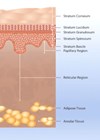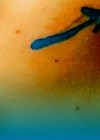Acne vulgaris is the most common potentially scarring skin condition seen in dermatology and general practice. A recent network metanalysis [1] confirmed the efficacy of oral pharmacological therapies but questioned the consistency of effect of topical agents and peels. Factors involved in this variability include the patient’s skin type, as well as genetic, hormonal and environmental factors.
Patients’ expectations are high, with a large negative psychological burden from undertreated acne [2]. There is a large market for multiple lotions, potions and treatments which prey on these high expectations for topical therapy success. As acne vulgaris can cause a blockage of skin due to excess keratin causing local and regional folliculitis, medical grade skin care and treatments can give patients a good chance of reducing acne and scarring.
Case report
Our unit has considerable experience with topical agents in the treatment of many skin conditions. The Definisse™ classic peel (RELIFE) course was chosen following informed consent of a 32-year-old female with superficial scarring from acne. She was due to get married in four months, hence an additional time pressure existed (case discussed with her permission). She had suffered from acne vulgaris since her early 20s that had resulted in scarring on her cheeks. As standard practice, a full skin history and evaluation was performed (including any occupational exposures, viruses e.g., Herpes Simplex, medications, allergies including after any usage of peels, skin lightening products, or isotretinoin).
The treatment was as follows:
- Pre peel priming – tretinoin was applied daily for two weeks prior to reduce recovery time and assist in the uniform penetration of the peeling agent.
- A peel test was performed behind the pinna to assess for any adverse skin reactions.
- Definisse™ oily skin pre-peel was applied to facilitate homogenous absorption and maintain a consistent pH.
- The perioral, nasolabial area and orbital region were protected with petroleum jelly to prevent over accumulation of agent.
- The Definisse™ classic peel was applied to the skin using a fan brush, evenly coating the treatment area. A thin white layer of salicylic acid crystals formed at 70 seconds.
- This represents the solvent evaporating followed by true frosting, a desired coagulation of superficial proteins and keratinocytes and resulting in epidermolysis.
- After 100 seconds erythema established over the face and cheeks.
- TheDefinisse™ neutralizing buffer was applied after 120 seconds on the initial treatment, neutralising the reaction.
- This represented the end of the first treatment and no lotions or cleansing was allowed for 12 hours.
- The patient returned three weeks later for a second round of Definisse™ Peel Program treatment and did not report any adverse side-effects.
- Repeated treatments (steps 3-10) at three-week intervals were undertaken for a total of four treatment rounds with Definisse™ Peel Program.
- Treatment number two was tolerated for 160 seconds before buffer was applied (step 8).
- For treatment number three (200 seconds) and four (220 seconds) the peel was tolerated for longer.
Results (Figures 1-5)
No adverse effects were reported apart from up to a week of grade one desquamation (expected) from any procedures. By treatment four, 14 weeks after commencement, there was a notable improvement in skin quality, surface, pigmentation and scarring.
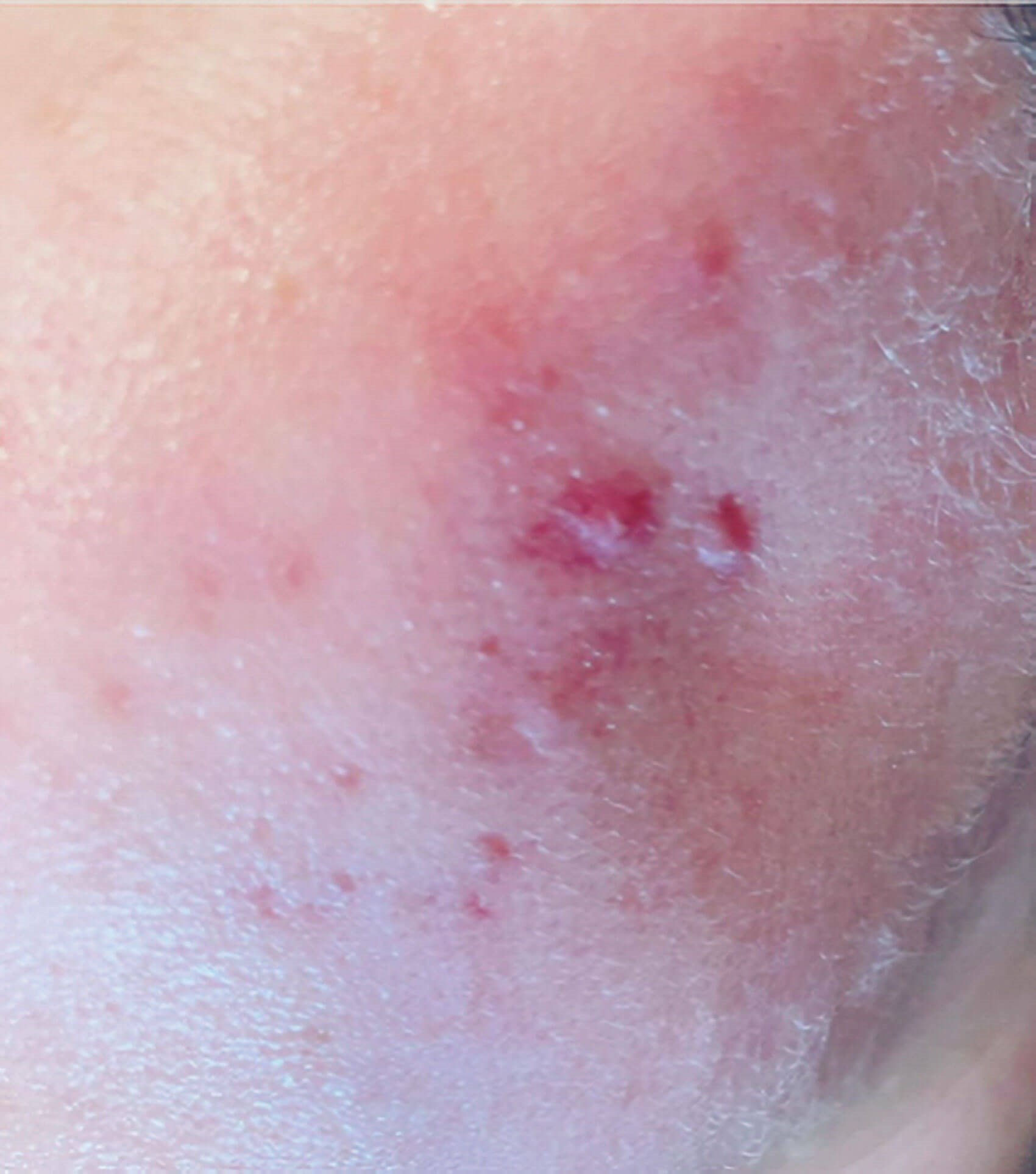
Figure 1: Before treatment.
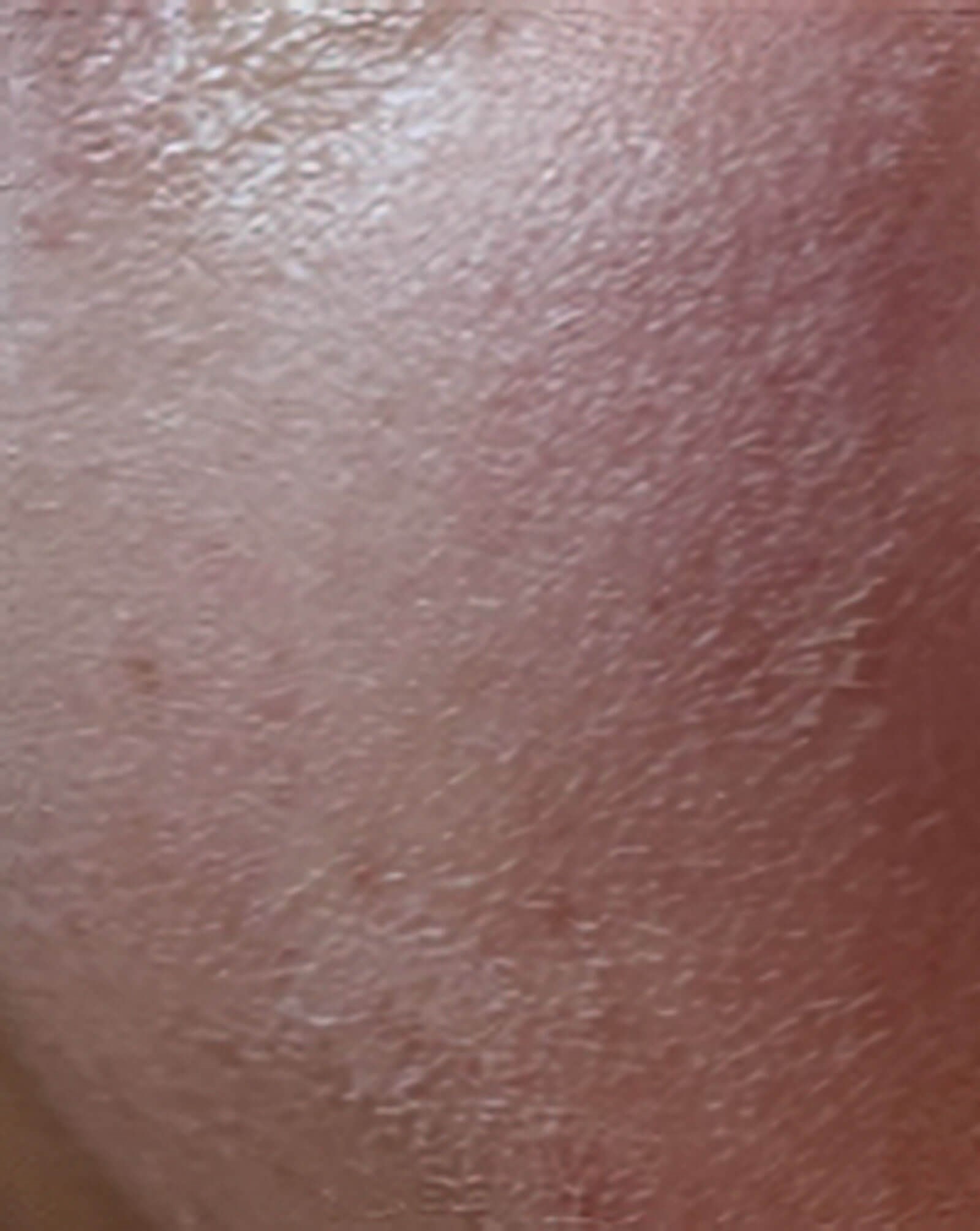
Figure 2: Frosting after application.
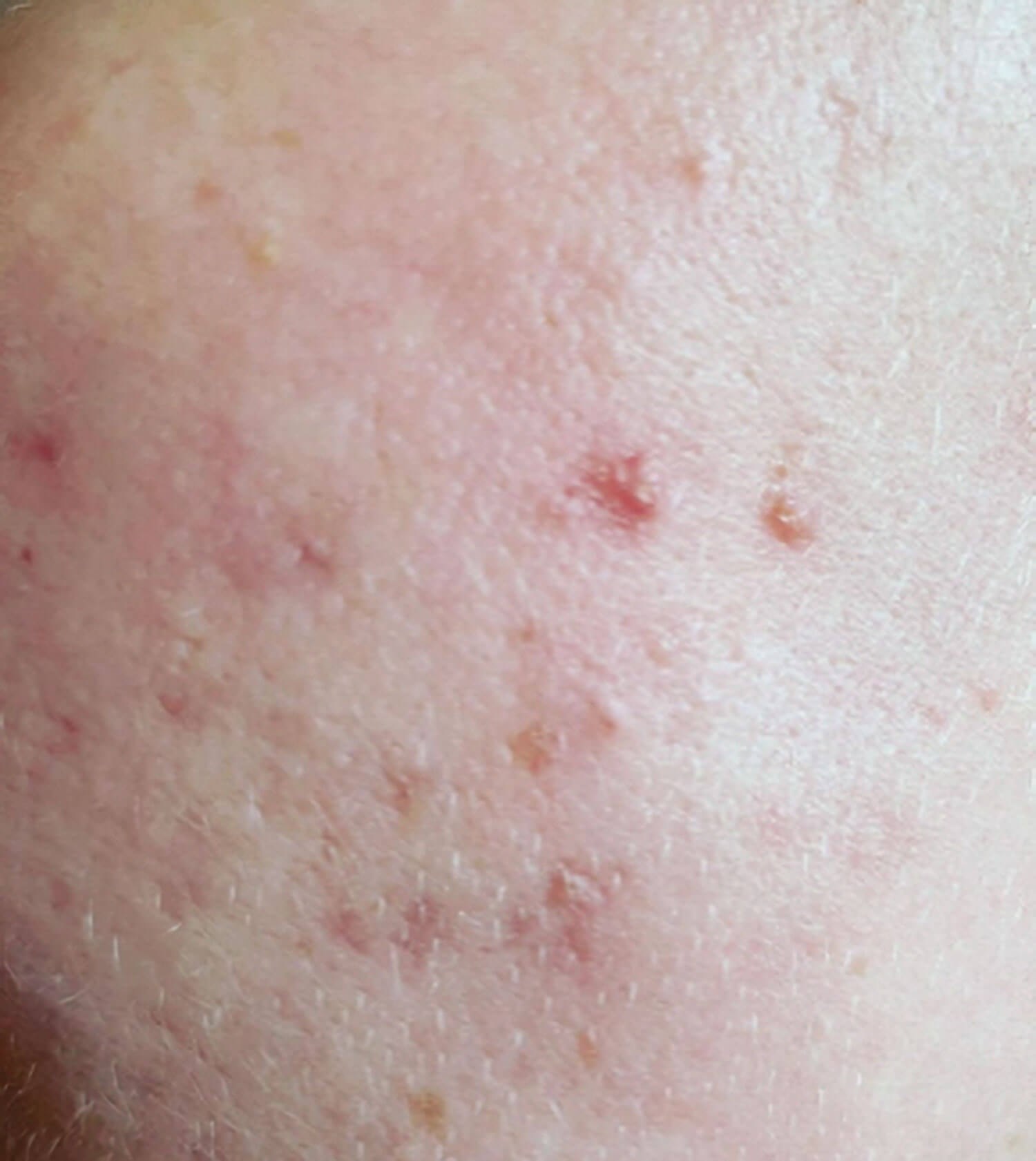
Figure 3: After the first peel.
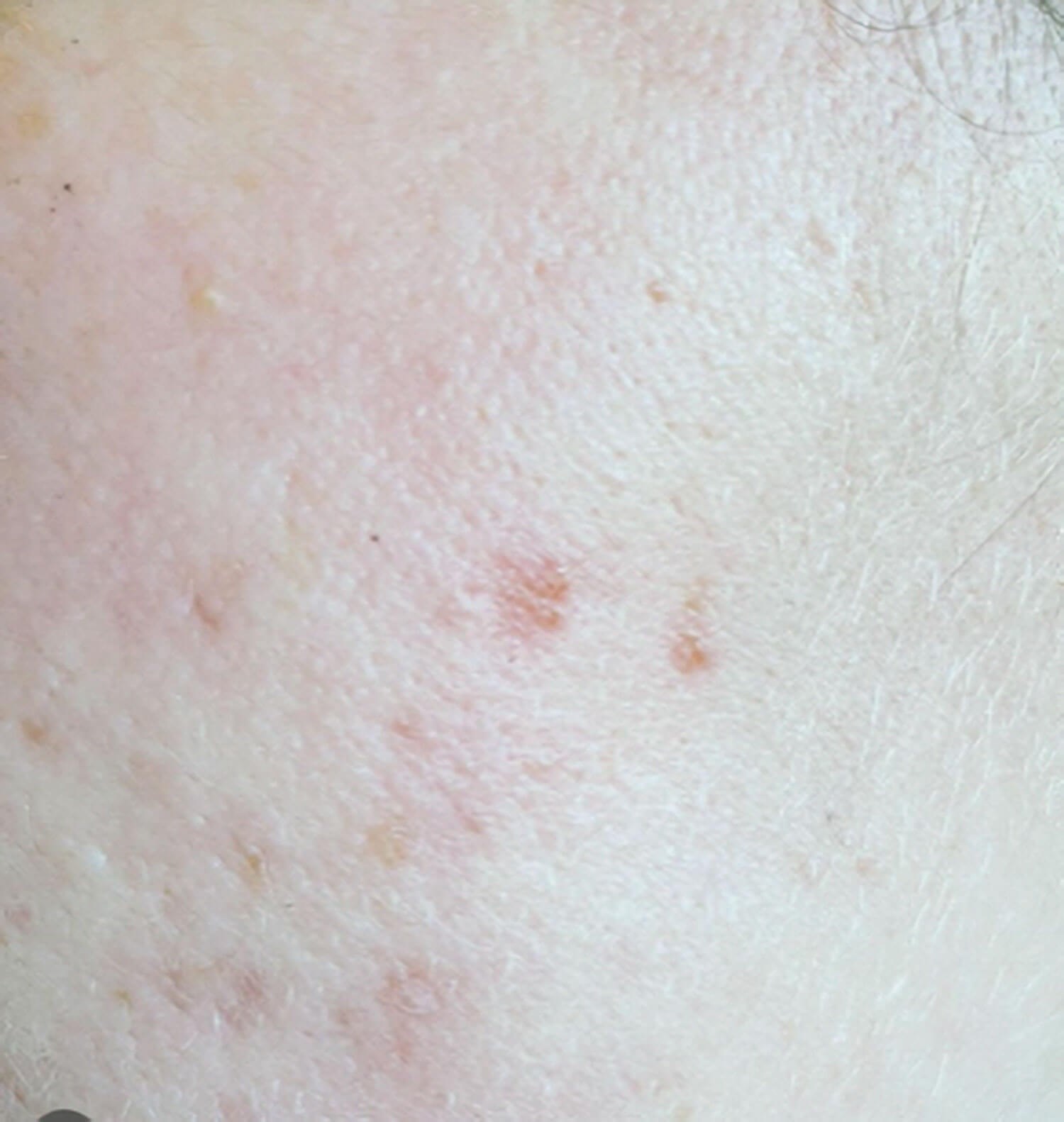
Figure 4: After the second peel.
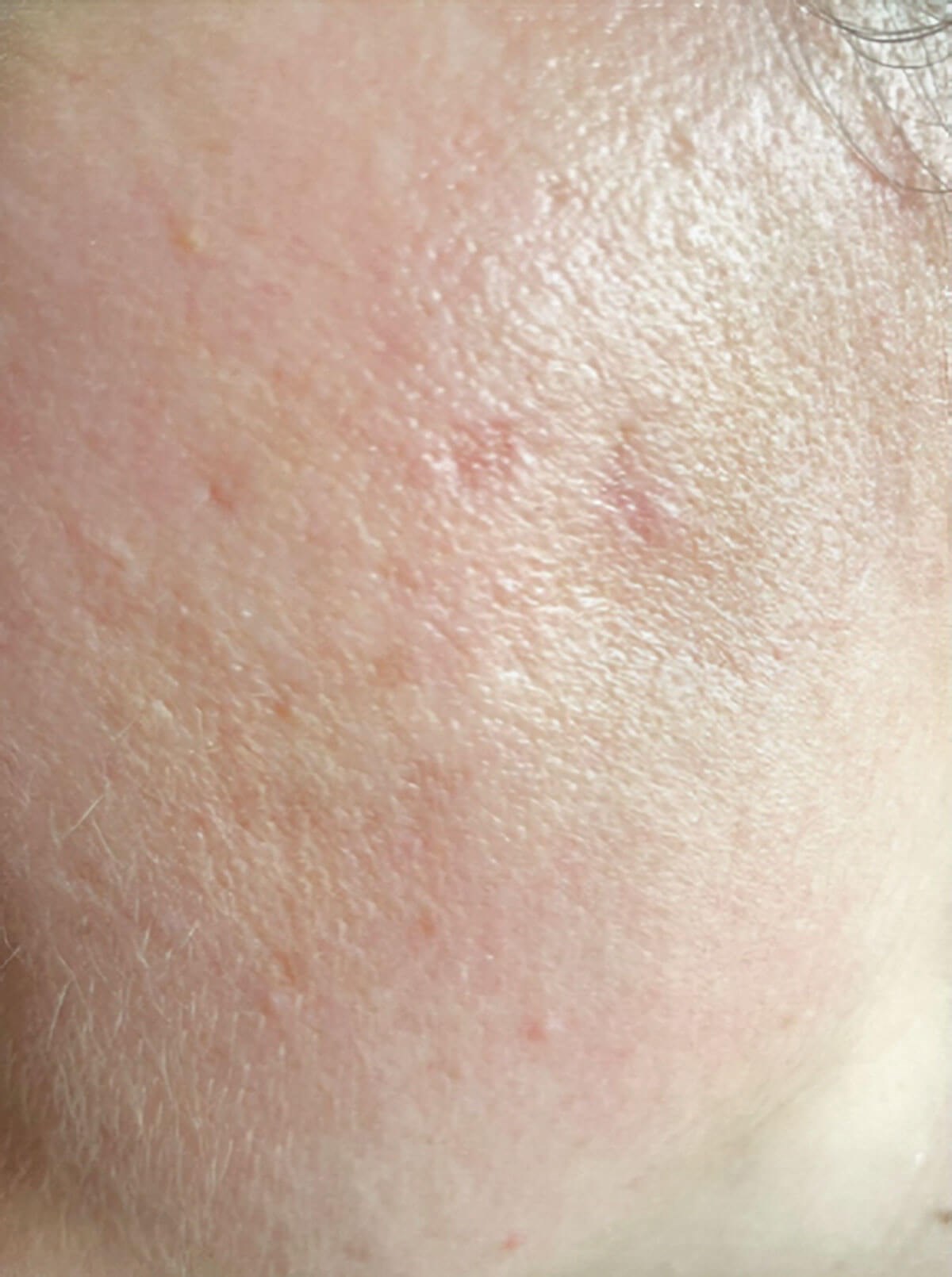
Figure 5. The final outcome.
Discussion
The Definisse™ Peel Program is indicated for superficial actinic-type wrinkles; photo-ageing lesions; comedonal acne, post-acneic skin lesions; prevention of papular pustular acne; melasmas; melanin pigmentations;photo-ageing spots. Each peel contains three different acids, that work on different layers of the skin. Salicylic acid provides an immediate keratolytic effect on the stratum corneum, allowing pyruvic acid penetration to deeper dermal layers. Pyruvate has antimicrobial and sebostatic properties, with the added benefit of stimulating collagen and elastin synthesis. Retinoic acid stimulates angiogenesis and collagen production, reducing fine lines associated with ageing and acne.
References
1. Mavranezouli I, Daly C, et al. A systematic review and network meta-analysis of topical pharmacological, oral pharmacological, physical and combined treatments for acne vulgaris. Br J Dermatol 2022;187(5):639-49.
2. Altunay I, Ozkur l. Psychosocial Aspects of Adult Acne: Data from 13 European Countries. Acta Derm Venereol 2020;100(4):00051.
Declaration of competing interests: The author received an honorarium for reporting the regimen and technique from RELIFE.
COMMENTS ARE WELCOME




